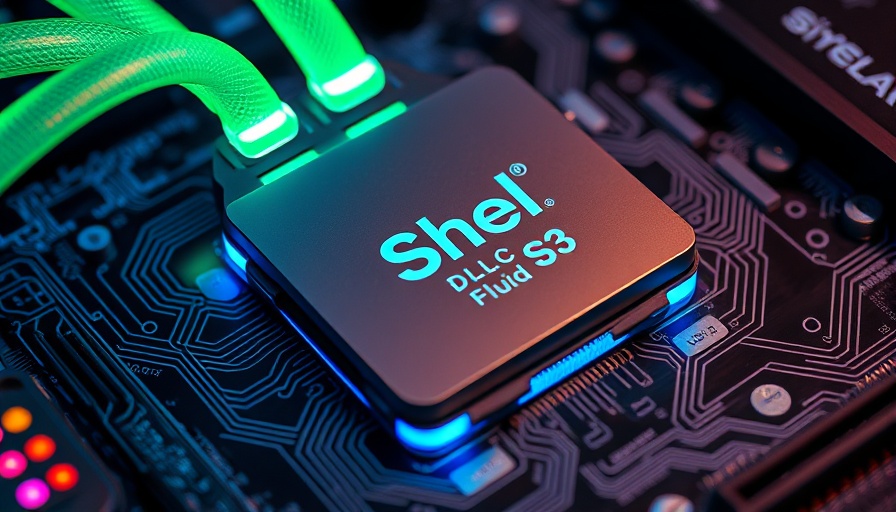
Revolutionizing Data Center Cooling with Shell's New Fluid
In an unprecedented move, Shell, one of the world's largest oil companies, has thrown its hat into the ring of technological innovation with the launch of its proprietary re-cooling solution, Shell DLC Fluid S3. Tailored specifically to the needs of cutting-edge data centers, this cooling fluid is set to redefine how high-performance computing operates in the era of artificial intelligence.
Why Direct Liquid Cooling is the Future
As data centers grapple with escalating power demands—currently consuming 2-3% of global energy—traditional air cooling systems are reaching their limits. Enhanced efficiency is not just a bonus; it’s a necessity. According to Shell, the new fluid could boost Power Usage Effectiveness (PUE) by as much as 27%, leading to a significant drop in reliance on energy-hungry air conditioning units. This leap towards direct liquid cooling is not merely a trend but an essential evolution for sustainable digital infrastructure.
A Deeper Dive into the Technology
The Shell DLC Fluid S3 isn’t your average coolant; it’s a propylene glycol-based solution designed to target heat-generating components, specifically CPUs and GPUs. This results in more efficient cooling when powering AI applications, where temperature control is crucial to maintaining performance and longevity of equipment. Notably, Shell’s fluid meets the stringent Open Compute Project PG25 standards, ensuring compatibility across a wide variety of server architectures.
Shell’s Commitment to Smart Cooling Solutions
Shell is not alone in this initiative—its competitor, Castrol, is also innovating in the cooling sphere with dielectric fluids geared toward immersion cooling systems. However, Shell's ambitious approach not only offers a direct-to-chip solution but also encompasses full immersion options, a first in their evolving product lineup. As Aysun Akik, VP of New Business Development at Shell Lubricants, articulates, this range aims to address the diverse cooling demands of present and future data centers.
Environmental Impact and Industry Implications
The launch of Shell DLC Fluid S3 stands as a beacon for environmental accountability within the tech industry. As energy consumption in data centers continues to rise, adopting more efficient cooling systems can significantly lower carbon footprints. This fluid represents a proactive approach toward eco-friendly practices in an industry that is often scrutinized for its high energy usage.
Looking Ahead: Feedback from Industry Experts
As this technology permeates the market, industry experts are keenly observing its impact. Early reviews from tech analysts suggest that the efficiency gains could spark a ripple effect, prompting other tech giants to reevaluate their cooling solutions and environmental stances. The arrival of Shell's coolant is not merely a product launch; it's a clarion call for an industry-wide transition toward sustainable technologies.
With the stakes higher than ever in the race for digital efficiency, the implications of Shell's innovative cooling solutions could be transformative, positioning the company as a critical player in the future of AI and high-performance computing.
 Add Row
Add Row  Add
Add 




Write A Comment